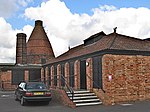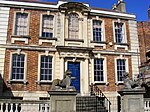Bridgwater and Taunton College
Bridgwater and Taunton College is a further education college based in the heart of Somerset, England, with main centres in Bridgwater, Taunton and Cannington. It educates approximately 3000 students between the ages of 16–18 in academic and vocational programmes in addition to several thousand part-time or mature students. The college was founded in 1973, although the history of its predecessor institutions dates to 1891. After a merger with Cannington College in September 2004, the college expanded its curriculum of full-time and part-time courses for school leavers, adults, university level students, the business community and students from overseas. In 2016, Bridgwater College merged with Somerset College to become Bridgwater & Taunton College and launched University Centre Somerset. The college offers courses from entry level through higher education. In addition to A-Levels and BTEC qualifications, the college offers the International Baccalaureate Diploma Programme. The college has links with the University of Plymouth by way of the University of Plymouth Colleges network, Bournemouth University, Oxford Brookes University and is part of the Wessex Partnership, in association with Bath Spa University. In 2012 the college became the sponsor of a Multi Academy Trust named Bridgwater College Trust. The college aims to support the development of schools within the Trust.
Excerpt from the Wikipedia article Bridgwater and Taunton College (License: CC BY-SA 3.0, Authors).Bridgwater and Taunton College
College Way,
Geographical coordinates (GPS) Address Phone number Website External links Nearby Places Show on map
Geographical coordinates (GPS)
| Latitude | Longitude |
|---|---|
| N 51.131388888889 ° | E -2.9877777777778 ° |
Address
Bridgwater and Taunton College
College Way
TA6 4PZ
England, United Kingdom
Open on Google Maps









